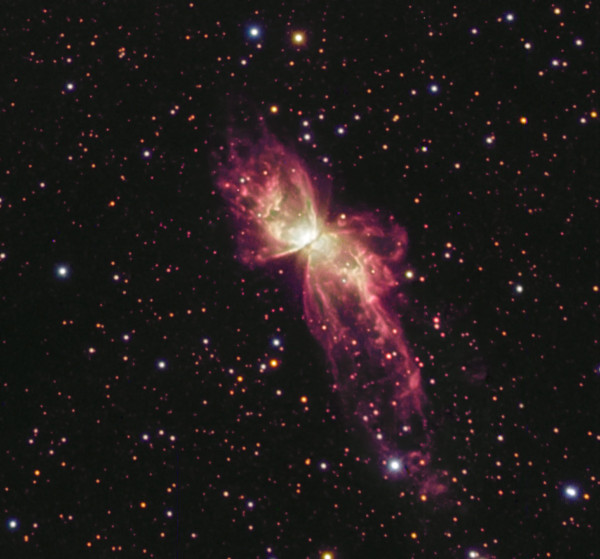“The butterfly counts not months but moments, and has time enough.” -Rabindranath Tagore
When stars like the Sun reach the end of their lives, they all follow fairly predictable patterns:
- Their cores contract, heat up, and start fusing helium into carbon.
- Their outer layers expand into a luminous red giant.
- When nuclear fusion ceases, they blow off their outer layers into a planetary nebula.
- And the core contracts down to a hot, compact, degenerate and low-luminosity white dwarf.
 Image credit: Robert Gendler, Jan-Erik Ovaldsen, Allan Hornstrup, IDA, via http://www.robgendlerastropics.com/NGC6302.html.
Image credit: Robert Gendler, Jan-Erik Ovaldsen, Allan Hornstrup, IDA, via http://www.robgendlerastropics.com/NGC6302.html.
But one of the most beautiful dying stars in this fashion, the Butterfly Nebula, is quite uncommon when it comes to the elements found inside, and the history of this object. With a central star at over 200,000 K, it has one of the hottest objects in the Universe inside of it! How did it get this way?


Such beauty ! Hubble (Francesco Antonucci) and the two from Barnabas Rumpf_1 are absolutely stunning ! Yet, under all this, one realizes the immense energy released in its transition. Makes our atom bombs look less than a fleas fart at ten paces.
;)
The article did not explain how the star ended up the way it has, which was promised in the lead in. It just described the nebula.
"Makes our atom bombs look less than a fleas fart at ten paces."
Maybe you should realize that it depends on relativity, on the circumstances and relations, whether an atomic bomb will appear to you as a fleas fart or rather as a big monster fart that iwill disintegrate you.
breathtaking
@#3 I was, but maybe I should have written ' relatively writing, of course'. :)
Try "like a fart in a teacup".
Neither have much overall effect on the thing interfered with, but nobody wants to enjoy it after the event took place...
Heh,heh,heh .....